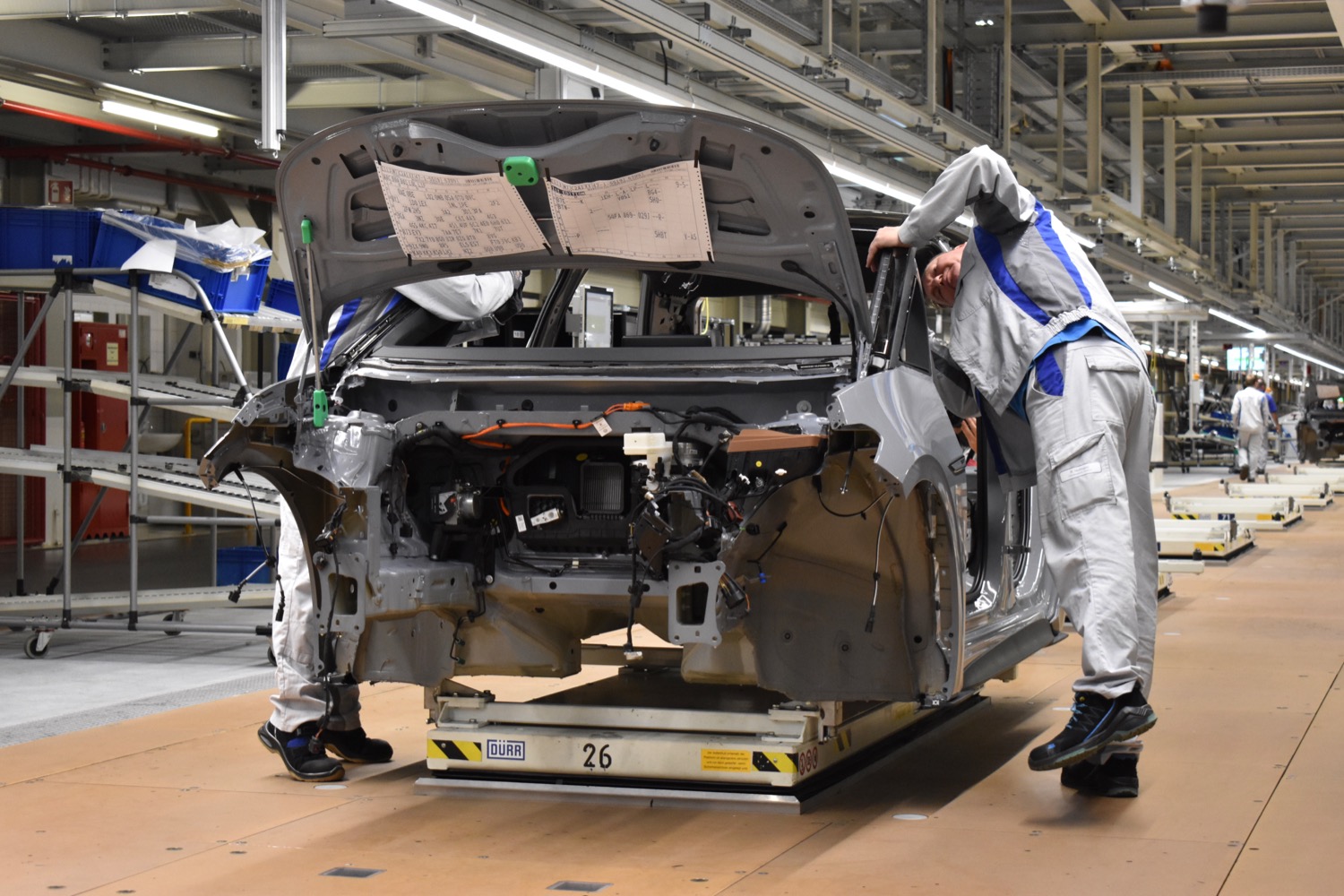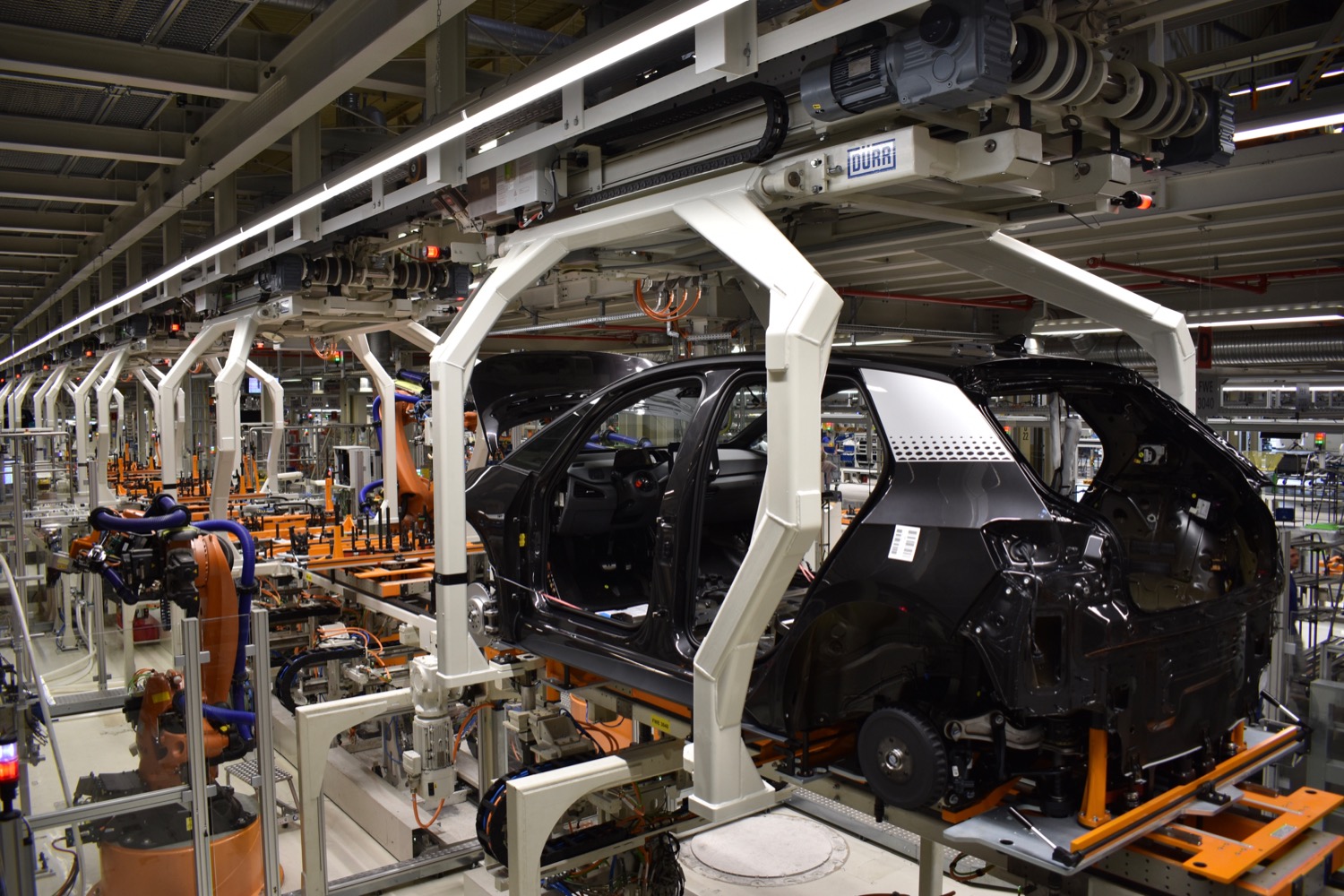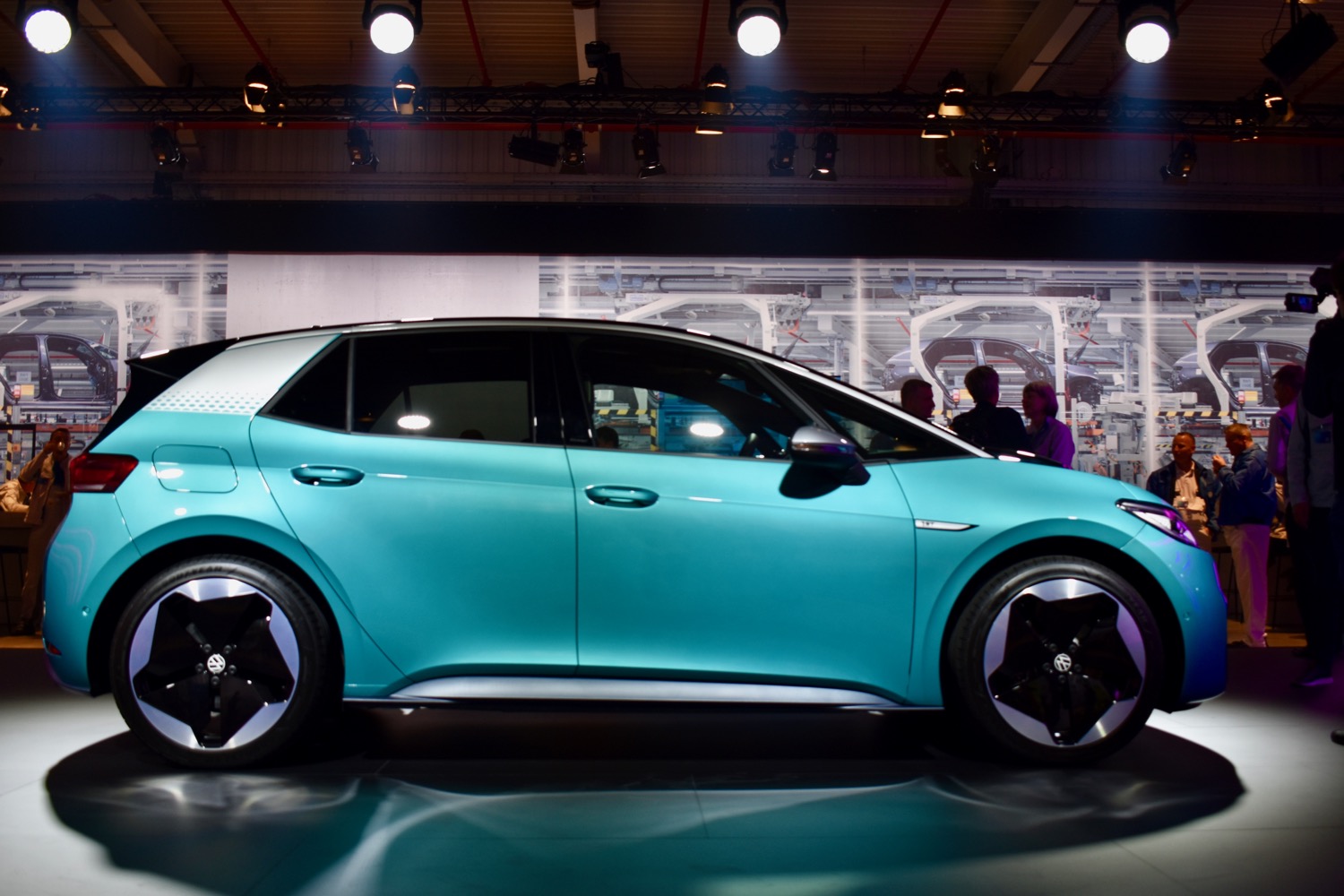
If you want to see the future of the auto industry, head to a German town that has been building cars for 105 years.
From the baroque Horch to the Communist-era Trabant and the ubiquitous Volkswagen Golf, all sorts of cars have rolled out of factories in Zwickau in the German state of Saxony. And Zwickau is now ground zero for an electric revolution: It’s the production site of the Volkswagen ID.3 and is setting the template for how VW plans to — as the ID.3’s marketing slogan says — build electric cars “for millions, not for millionaires.”
The Volkswagen Group isn’t the first company to launch a mass market electric car, but no other mainstream company has made such a big push for electrification. VW plans to sell 22 million electric cars by 2028 and is spending an astounding 30 billion euros ($33 billion) to make that happen. Staring with Zwickau, Volkswagen is using a mix of its existing automotive knowhow and the latest technology to make that happen.
Diesel penance
Five years ago, it would have been impossible to imagine this moment. Volkswagen had made a token effort at electric cars with the e-Golf, but the company was still trying to convince the world that diesel engines were the most practical way to lower emissions — right until it was caught cheating on emissions tests in the United States. The resulting “Dieselgate” scandal forced VW onto a different path.
Shortly after pleading guilty to using illegal software to cheat on emissions tests, Volkswagen announced plans for a platform called MEB that would underpin a range of future electric cars. At the time, it was easy to dismiss the announcement as a cynical attempt to distract the public from the ongoing diesel scandal. But Volkswagen was serious.
The automaker unveiled a series of MEB-based concept cars, including a dune buggy as well as a reimagined version of the hippie-favorite Microbus. As part of the settlement with the U.S. government over its diesel cheating, VW was forced to commit $2 billion to zero-emission vehicle infrastructure. The resulting Electrify America program created a readymade network of charging stations for VW electric cars (the stations are open to cars from all manufacturers, however). Finally, VW unveiled the first of its MEB-based production models – the ID.3 hatchback – at the 2019 Geneva Motor Show.

“The question is no longer whether electric vehicles will make the breakthrough. The question is rather how fast they will make the breakthrough and in what region,” VW Group CEO Herbert Diess said in a speech heralding the start of ID.3 production. “With the ID.3 we are taking e-mobility out of the niche.”
Volkswagen chose the number “3” for its first mass-market electric car because it will the company’s third epoch-defining car, following the original Beetle (#1) and the Golf (#2). The ID.3 was designed to do exactly what those cars did: sell in massive numbers. It’s about the same size as the current-generation Golf, and will cost about the same in Europe, according to VW. It will have between 205 miles and 341 miles of range. The ID.3 won’t come to the U.S. (because Americans hate hatchbacks), but a related crossover based on the ID Crozz concept (likely named ID.4) will be coming state-side. U.S. sales will begin at the end of 2020, a VW spokesperson said.
Having a spiffy new electric car is only half the battle, though. The Nissan Leaf and Chevrolet Bolt EV are great cars, but Nissan and General Motors have yet to follow them up with additional models, and sales remain modest. Ford has promised electric models (including one based on the VW MEB platform) targeting some of the most popular market segments, but none of these cars have entered production yet. Tesla has experienced severe growing pains trying to expand from a low-volume luxury automaker to a mainstream player. Numerous startups have promised to launch electric cars of their own, with little to show for it.
Scaling up
Volkswagen has something no startup can claim: experience building massive numbers of cars. The Zwickau plant currently churns out 300,000 internal-combustion cars per year. By 2021, VW not only expects to replace that entire output with electric cars, but increase production to 330,000 cars a year.
To do that, Volkswagen is relying on lessons learned from decades of building internal-combustion cars. The MEB platform that underpins the ID.3 and other electric cars slated to be built in Zwickau (including the ID.4 crossover and models for Audi and the Spanish Seat brand) has a modular design, something VW perfected with its previous platform for internal-combustion cars – the MQB chassis.
MQB underpins everything from the Golf to the seven-seat Atlas crossover, and allows multiple models to be built on the same assembly line by putting the pieces together like life-size model kits. The ID.3 assembly line at Zwickau works much the same way as assembly lines building MQB-based VWs. A car’s running gear is assembled by teams of humans and robots, then married to the body. But instead of gasoline or diesel engines and transmissions, it is electric motors, battery packs, and high-voltage cables getting maneuvered into place.
Robots do most of the heavy lifting – literally. They’ll pick up a complete front suspension assembly and drop it in place, then lift everything up to meet a car body traveling overhead on a conveyor. Humans do more delicate work, such as attaching the charge port and installing the headliner. VW hopes to automate some of these jobs as well, though. The company hopes to bring automation levels at Zwickau from 17 percent to 28 percent in the coming years.

Increased automation, along with the lower part count of electric cars compared to internal-combustion models, has led to some concerns that electrification will mean a loss of factory jobs. All 8,000 workers at Zwickau are participating in retraining for the shift to electric-car production, according to VW. The company expects to retain the same number of workers long term, Thomas Ulbrich, VW’s head of e-mobility, told Digital Trends.
“We increased capacity by 10 percent, and also we have a loss of workforce by demographic reasons for the next [few] years, and so it fits perfectly together,” Ulbrich said, adding that VW will guarantee employment to current workers through the next decade.
From the retooling of assembly lines to the retraining of employees, Zwickau will serve as a model for how other Volkswagen factories can be converted to produce electric cars. That includes VW’s Tennessee factory, which will start electric production at the end of 2022, a company spokesperson said.
More than just cars
Electric cars need more to succeed than a factory capable of spitting them out in large numbers.
In stark contrast to the U.S., where the Trump Administration has become preoccupied with rolling back emissions standards, German Chancellor Angela Merkel expressed strong support for Volkswagen’s electrification efforts. In a speech at the ID.3 production ceremony, Merkel said she hopes to see seven million to 10 million electric cars on German roads by 2030, supported by one million charging stations. Government incentives for both cars and charging stations will be put in place to meet those goals, Merkel said.
Volkswagen is also trying to make the entire production process as green as the cars themselves. It claims ID.3 production will be completely carbon neutral, thanks to the use of renewable energy, as well as carbon offset programs such as reforestation in Indonesia. The company is also investigating ways to reduce the use of cobalt used in batteries, Ulbrich, the e-mobility boss, said. Most cobalt is currently mined in countries with poor human rights records.
Hi! Buy?
None of this will mean anything if people don’t buy Volkswagen’s new electric cars. Bigger battery packs and the Electrify America charging network will go a long way to solving one of the major hurdles to increased sales – range anxiety. But U.S. dealerships have been hesitant to sell electric cars. That’s understandable, given that they still stock gasoline cars that don’t take as much effort to sell.
“As soon as they get the trust in the cars, I’m sure that they will start to convince the customers,” Ulbrich said of dealerships. He said increased connectivity could offer dealerships more opportunities for revenue, such as reminding customers when it’s time to buy new tires. “I think the big hesitations a dealership has nowadays will disappear, but it will take some time,” he said.
Volkswagen will continue to supply its U.S. dealers with high-profit crossovers – such as the new Atlas Cross Sport – and is launching a new internal-combustion Golf aimed primarily at Europe. As one of the world’s largest automakers, VW has the bandwidth to do both. The question is whether the market shift from fossil fuels to electric power will go as smoothly as the changeover from Golfs to ID.3s at Zwickau.
Editors' Recommendations
- VinFast is bringing a mini electric SUV to the U.S., and maybe a pickup, too
- Volkswagen is launching its own self-driving car testing program in the U.S.
- GM plans to phase out Apple CarPlay for EVs, go all-in on Android integration
- VW previews its next electric car in trippy camouflaged form
- Check out Spectre, Rolls-Royce’s first all-electric car





